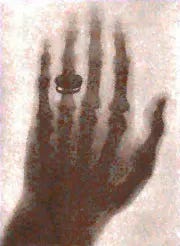On a brisk autumn day on November 8, 1895, a remarkable event unfolded in the laboratory of Wilhelm Conrad Röntgen, piercing the veil between the visible and the invisible. This momentous occasion would later be heralded as a pivotal scientific breakthrough of the 19th century: the discovery of X-rays, a feat that would illuminate the shadowed corridors of the human body.
Picture the scene: in a quiet German lab, Wilhelm Röntgen, a physicist, is deeply engrossed in experiments with cathode rays—streams of electrons observed in vacuum tubes, a common interest among scientists of his time. Unbeknownst to Röntgen, his routine investigation was about to transmute into a monumental discovery.
When the high-voltage current energized the tube, a mysterious glow appeared on a nearby chemically coated screen. Perplexed, Röntgen observed that despite the tube being wrapped in black cardboard, which should block all light, an unearthly luminescence suggested the presence of rays invisible to the naked eye. Röntgen had stumbled upon something extraordinary: a new kind of ray, capable of traversing opaque materials.
Seized by the gravity of his find, Röntgen devoted himself to understanding these enigmatic 'X-rays'. He found that while they could effortlessly penetrate flesh, they were stopped by denser materials like bone and metal. This led to the creation of the first X-ray image. The haunting outline of his wife's hand, her wedding ring eerily suspended among the bones.
The impact of Röntgen's discovery reverberated throughout the scientific community, introducing a revolutionary, non-invasive way to look inside the living body without the blade of a surgeon. For his groundbreaking work, Röntgen was awarded the very first Nobel Prize in Physics in 1901, marking the dawn of diagnostic radiology.
Now, over a century later, X-rays remain a fundamental tool in medicine, aiding in everything from the diagnosis of broken bones to the treatment of cancer. Their discovery not only shed light on the hidden structures within us but also exemplified the essence of scientific inquiry: an unending pursuit of knowledge in the face of the unknown.
As we commemorate the anniversary of the X-rays, we celebrate the undying curiosity of humanity, a trait that compels us to explore and understand the world beyond our senses. Röntgen's serendipitous discovery on that autumn day forever altered our view of the physical body and the boundaries of science.
In homage to Röntgen's spirit of discovery, let us ponder: What other mysteries lie in wait for our curious minds to unveil? As science marches forward, how will the X-rays of the past inform the technologies of the future? Join the conversation and share your vision of what lies beyond the current frontiers of science.






I love "oops, I discovered something" stories!